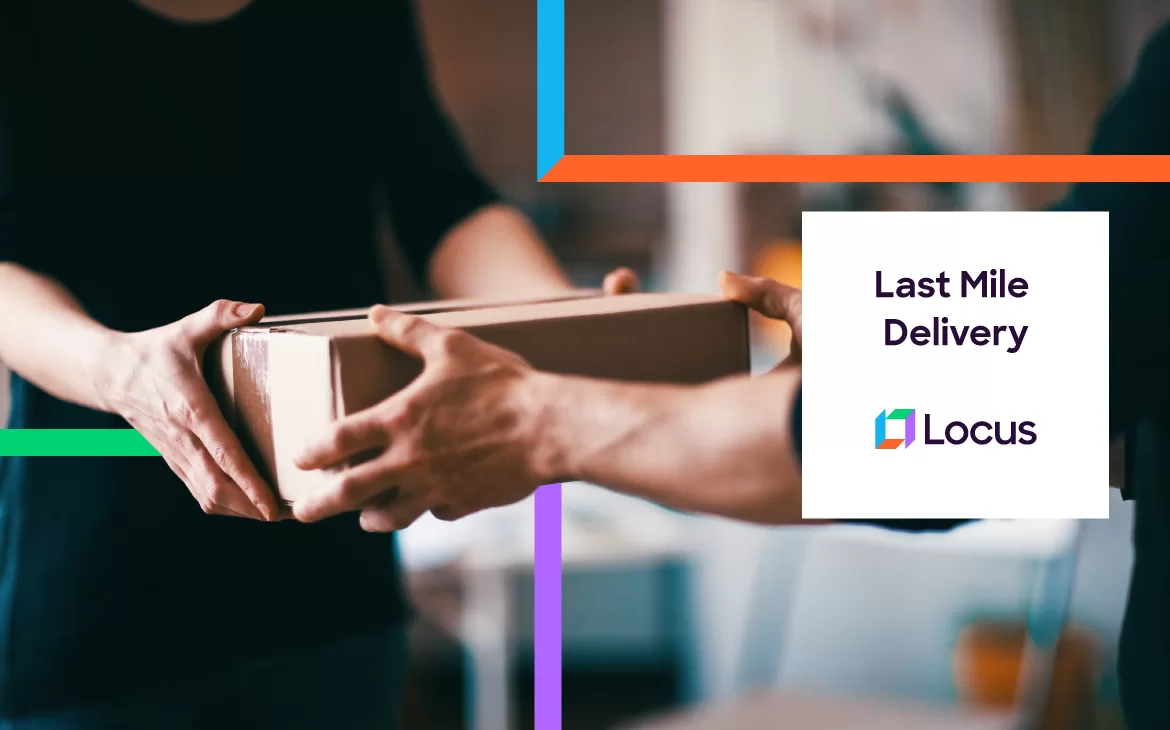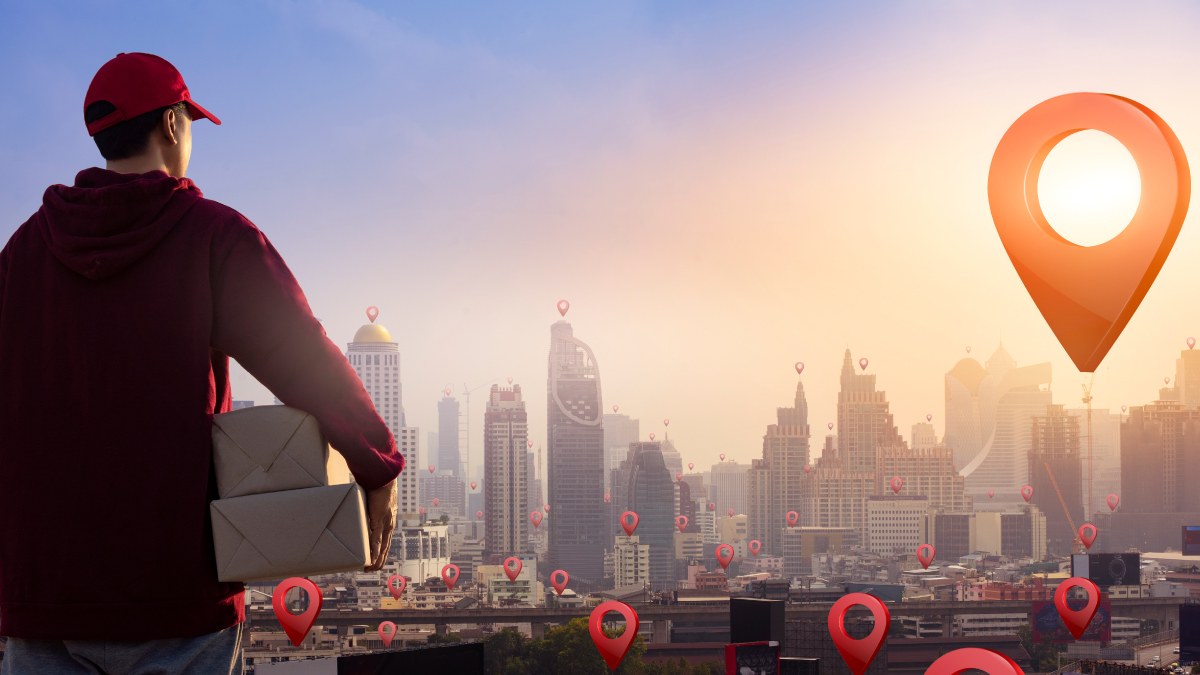Last Mile Delivery Optimization
Last Mile Delivery – A Complete Guide
Jun 21, 2022
7 mins read

The 21st-century customer is a tough cookie. They desire fast, speedy and reliable order fulfillment without compromising on product quality. They demand transparency and regular updates, and they also want flexible delivery hours, and, in turn, offer their loyalty. These are expectations not just from business to consumer (B2C) sales channels but from business to business (B2B) retailers as well, making it vital for retailers and logistics providers to walk at the same pace as the customer.
The last leg of the supply chain, also known as the last mile or the final mile, has grown increasingly important in the wake of this popularity. It deals with the movement of goods from stores and storage centers to the end customer. Its direct association with the end customer and power in determining their experience makes last-mile delivery vital.
What is last-mile delivery?
So, what is the last mile in logistics? It is only one part of the entire supply chain ecosystem. The three legs of the supply chain are the first, middle and last mile. Goods move from the manufacturers to a distribution partner’s hub in the first mile, from distribution centers to retail outlets and facilities in the second mile and from sales hubs to their final destination in the last. Everything from your grocery delivery in a matter of minutes, to the television set you purchased online that was delivered with utmost care is an example of efficient last-mile delivery.
In 2021, retail e-commerce sales amounted to approximately $4.9 trillion worldwide. This figure is expected to grow by 50 percent over the next four years, reaching about $7.4 trillion in 2025. Home delivery gained popularity during the pandemic and its demand has sustained up until 2022. In 2021 alone, over 2.14 billion people worldwide were expected to buy goods and services online, a big jump from the 1.66 billion global digital buyers in 2016.
How does last mile delivery works?

Last mile delivery is important to get right because it deals with the customers directly. It must be quick and efficient, and, at the same time, keep up with changing customer demands. Each of the deliveries in the last mile has its own route, location and schedule. As hundreds of orders pour in on a daily basis for many businesses, an efficient last-mile delivery system proves helpful in managing, tracking and scheduling deliveries.
Download our whitepaper: Find the Right Balance in your Last Mile Delivery
What makes last-mile delivery successful?
Delivering the order to the customer on time is important, but it is not the only factor in determining a positive experience with the customer. Speed, efficiency, transparency, and personalized experience all play an important role in making last-mile delivery successful.
Speed, in particular, has become a non-negotiable for an increasing number of customers when it comes to food and grocery delivery. In fact, customers will gladly pay a premium if it means that shipping times can be accelerated. According to this news report, 65% of US consumers said they would pay more for faster deliveries that were more reliable.
Looking at the last-mile problem
The last mile is a bit of a conundrum. While customers are always seeking deliveries that are free and fast, last-mile delivery is also the most expensive and time-consuming part of the supply chain. According to a Statista report, one-third of the respondents of a survey of key stakeholders from postal, parcel, and logistics enterprises say the biggest challenge in last mile delivery in North America is the lack of qualified drivers for hire, closely followed by last-mile process inefficiencies.
Not only are last-mile processes difficult to plan, but the volume of deliveries also fluctuates according to the seasons, making it difficult for delivery companies to keep up and they often take help from external service providers. Planning an ideal standardized delivery route is difficult as it is impossible to take all the variables into account: traffic congestion, limited parking space, unclear addresses, among others. And so, there is always an element of unpredictability that remains a part of the last mile operation.
Common challenges in last-mile delivery:
- Fulfilling orders on the same day: As quick commerce grows popular and same-day deliveries become the norm, businesses struggle to plan routes efficiently and utilize vehicle capacity in an optimum manner.
- Visibility in the supply chain: One of the reasons that make the last mile a time-consuming process is that most logistics managers don’t have the supply chain monitoring infrastructure that allows them to look into all the systems at any given point. Delays, vehicle idling, inaccurate Expected Time of Arrivals (ETA), and route diversions are all a result of poor visibility.
- Controlling carbon emissions: As transportation contributes greatly to the world’s carbon emissions, it is important to reduce fuel consumption and miles traveled in the final stages of the last mile. More and more consumers are willing to pay extra to support sustainability and carbon neutral deliveries can be a great way to do that.
Finding the ideal last-mile delivery solution
The roadblocks to delivering customer delight are many: Orders are often misplaced or manhandled; the routes planned for drivers are often suboptimal, which causes delays; businesses usually don’t have real-time visibility on the status of delivery, and this prevents customers from getting real-time updates as well. Miscommunication between customers, drivers and supervisors can add to this chaos.
For these reasons, a growing number of delivery providers are looking to invest in dispatch, routing and visibility solutions to make the last mile a hassle-free experience. Locus’ end-to-end dispatch management platform provides the ideal last-mile delivery solution for your business. These are some of the ways logistics optimization can benefit your business:
- Acts as the single source of truth: Locus is a single integrated platform that automates all fulfillment stages with secure applications and seamless integrations. This is largely possible as all applications communicate with each other and use the same data, making Locus’ dispatch management platform the single source of truth for all orders and channels. It is this ability that allows it to power excellence in last-mile fulfillment across the order fulfillment cycle.
- Helps to plan more efficiently: By taking 180+ business and real-world constraints into account, Locus’ route planning engine benefits a business by optimizing delivery routes and improves the overall operational efficiency. Its multi-stop route planning and intelligent parcel sorting system help drivers get to task faster and spend less time in shipment processing.
- Brings end-to-end visibility: Locus’ dispatch management software helps to maintain a bird’s eye view of all deliveries, irrespective of fulfillment models and channels. Right from the time of pickup to the time of delivery, it simplifies task assignment and preserves an in-depth order-level status history, for drivers with the help of a dedicated driver companion app.
- Bring about sustainable growth: The Locus platform helps in planning daily dispatches and delivery routes, taking into account real-world constraints such as zone-based restrictions, traffic conditions, and rider preferences. All of which result in faster deliveries, lesser miles driven and fuel cost savings.
Last mile doesn’t have to be expensive and time-consuming. Businesses must take cues from the ongoing dynamics in last-mile logistics and prepare for the future with technology as well as agile last-mile strategies by their side.
Wish to elevate the quality of your last-mile delivery? Talk to our experts!
Related Tags:

Last Mile Delivery Optimization
Sequence Adherence and Why it Matters for Last-Mile Excellence
Sequence adherence has a steep mandate that must also balance the needs of the drivers. Learn why it matters and how it improves the last mile excellence.
Read more
Blog
Omnichannel Retailing and How to Achieve Last-mile Excellence
Omnichannel retailing is a process that provides seamless, frictionless and unified brand experience across both online and offline channels.
Read moreMOST POPULAR
EDITOR’S PICKS
SUBSCRIBE TO OUR NEWSLETTER
Stay up to date with the latest marketing, sales, and service tips and news


Last Mile Delivery – A Complete Guide